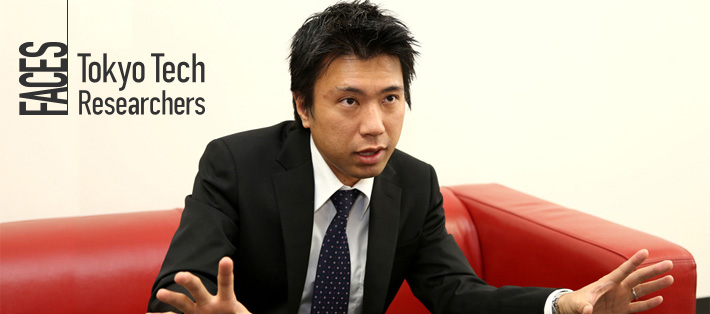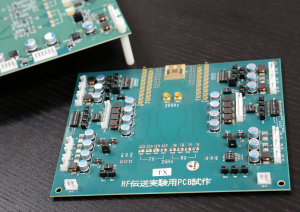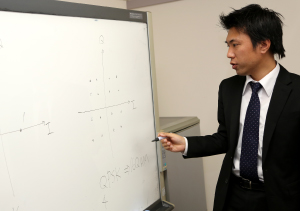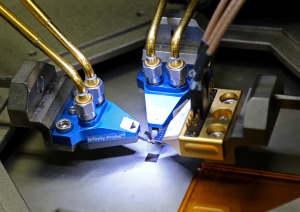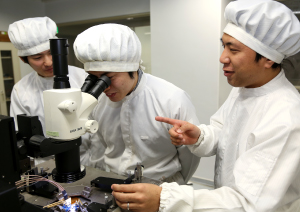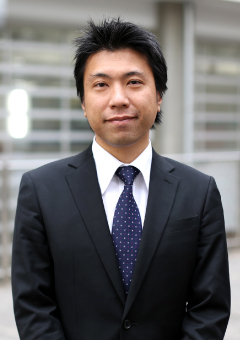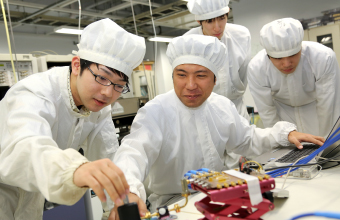
Finally, Okada heartily encourages future students based on his own experiences.
"Technology in the future can be developed in your own way if you properly learn the basics and learn from failures and small successes on the way to your goal. Tokyo Tech has a good environment and supportive colleagues to help you realize your ideas. Why not give Tokyo Tech a chance?"
Explanations of Technical Terms
1. Injection locking phenomenon
Christiaan Huygens, a Dutch scientist, discovered this phenomenon in the 17th century in the synchronization phenomenon between clock pendulums. In integrated circuits with multiple oscillators, if one oscillator is disturbed by another oscillator at a different frequency, the circuit will malfunction.
2. Reconfigurable technology
This is a technology that enables the change of circuit configurations in block units without turning off the power source. This technology has the advantage that multiple wireless services can be switched according to the situation by a single set of wireless circuits.
3. International Solid-State Circuits Conference
The International Solid-State Circuits Conference (ISSCC) is an international conference for cutting-edge semiconductors hosted by the IEEE in the United States. It is the most prestigious of the semiconductor-related conferences and is also called the "Chip Olympics."
4. Gbps (gigabits per second)
This value represents the number of billions of bits of data that can be transmitted in one second. 1Gbps is 1 billion bps (=1000Mbps).
5. 64QAM
This is a digital modulation scheme for doing conversions between digital data and radio wave/electric signals. It synthesizes two waves that are out of phase with each other by 90° and detects each wave by eight steps of amplitude and transmits six bits of information at one time. In this connection, 16QAM is the modulation scheme that can similarly transmit hexadecimal (4 bits) by detecting four steps of amplitude.
6. CMOS (CMOS, Complementary MOS)
A manufacturing technology/circuit complementarily using n-type and p-type MOSFETs (Metal-oxide-semiconductor field-effect transistors).
. Any information published on this site will be valid in relation to Science Tokyo.


